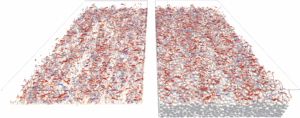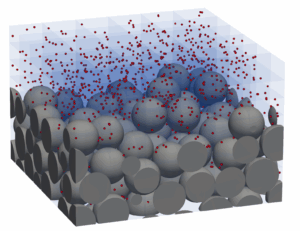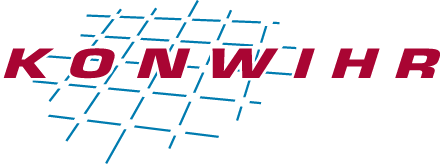Applicant
Prof. Dr.-Ing. habil. Michael Manhart
Associate Professorship of Hydromechanics
TUM School of Engineering and Design
Technical University of Munich (TUM)
Project Overview
The transport of particles and dissolved substances in turbulent flows is crucial for many environmental and engineering problems, from the spread of aerosols and microplastics to the mixing of nutrients and chemicals in rivers, reactors, and the atmosphere. CFD simulation offers powerful insights, but conventional grid-based (Eulerian) methods struggle with sharp concentration gradients and particle-fluid interactions at realistic conditions, which are often characterised by high Schmidt numbers.
Our in-house solver MGLET, recently released as open source [2], has been applied to a wide range of turbulent flow problems, including porous media flows [3] and microplastic dispersion in open channels [1]. The next step is to extend MGLET with a GPU-enabled particle transport module, covering both tracer particles (representing dissolved substances) and inertial particles (finite-size particles). By offloading particle computations to GPUs, the solver will make far more efficient use of modern supercomputers such as LRZ’s SuperMUC-NG Phase 2, leaving CPUs free for core flow calculations.
The outcome will be a high-performance, openly available tool for direct numerical and large eddy simulations of mixing and reactive transport in water and porous sediments, with direct implications for environmental protection and industrial mixing processes.

Figure 1: Vortex structures over a smooth vs. porous bed [3].

Figure 2: Tracer particles at the interface of a porous river bed and the free stream.
References
[1] Y. Sakai and M. Manhart. Direct numerical simulation of the distribution of floating microplastic particles in an open channel flow. Applied Research, 3(1):e202200092, 2024.
[2] MGLET Developers. Mglet-base flow solver. https://github.com/tum-hydromechanics/tum-mglet-base, 2025.
[3] S. v. Wenczowski and M. Manhart. Turbulent flow over random sphere packs – an investigation by pore-resolved direct numerical simulation. J. Fluid Mech., 1001:A29, 2024.

